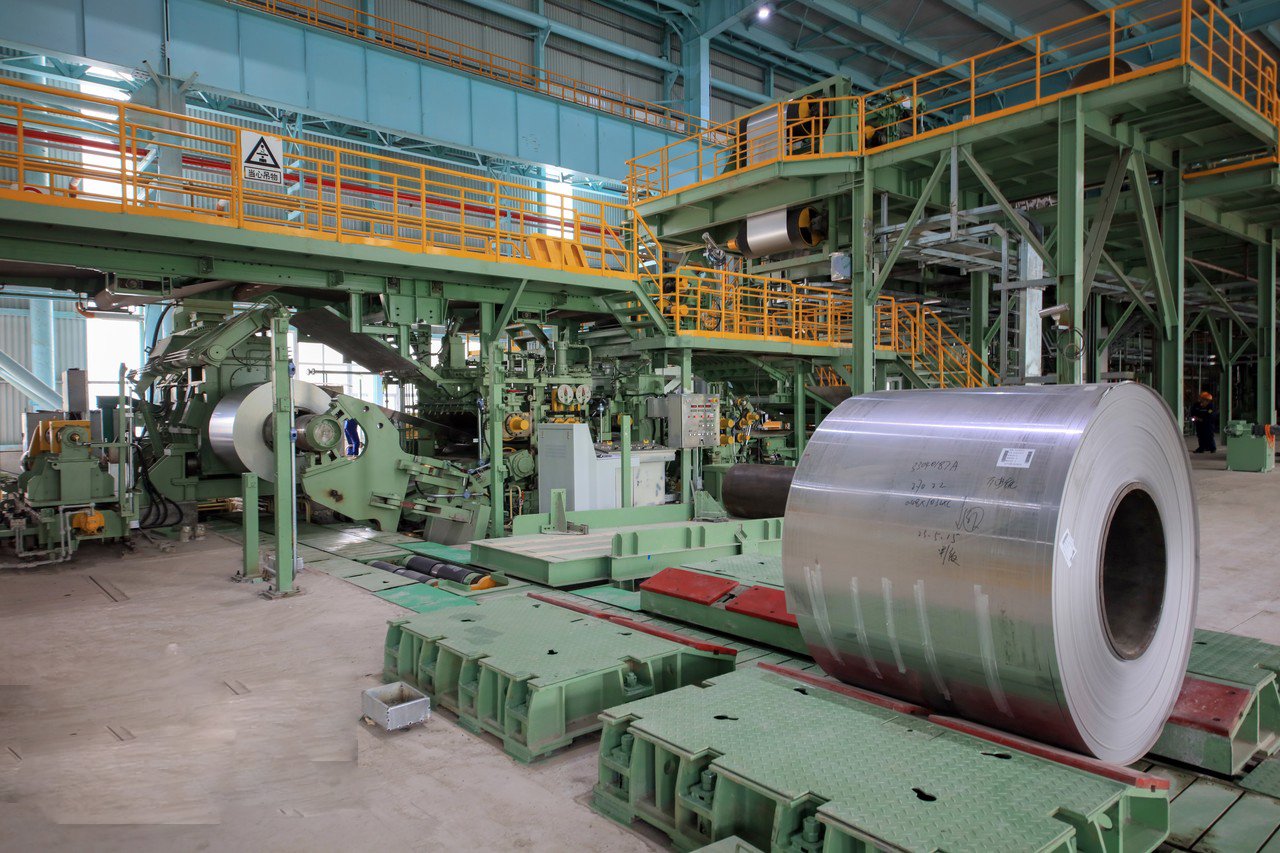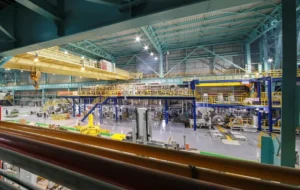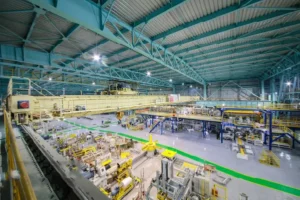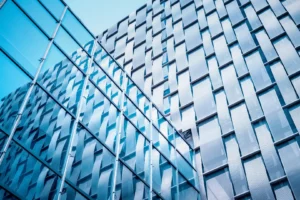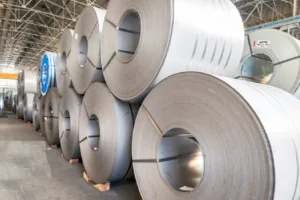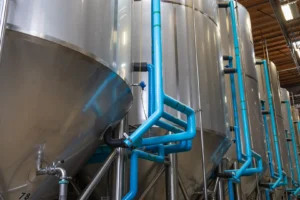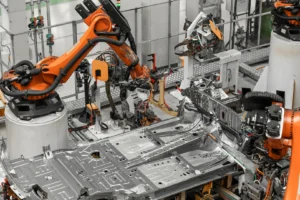Нержавеющая сталь 201 против 304: Когда дешевле имеет смысл
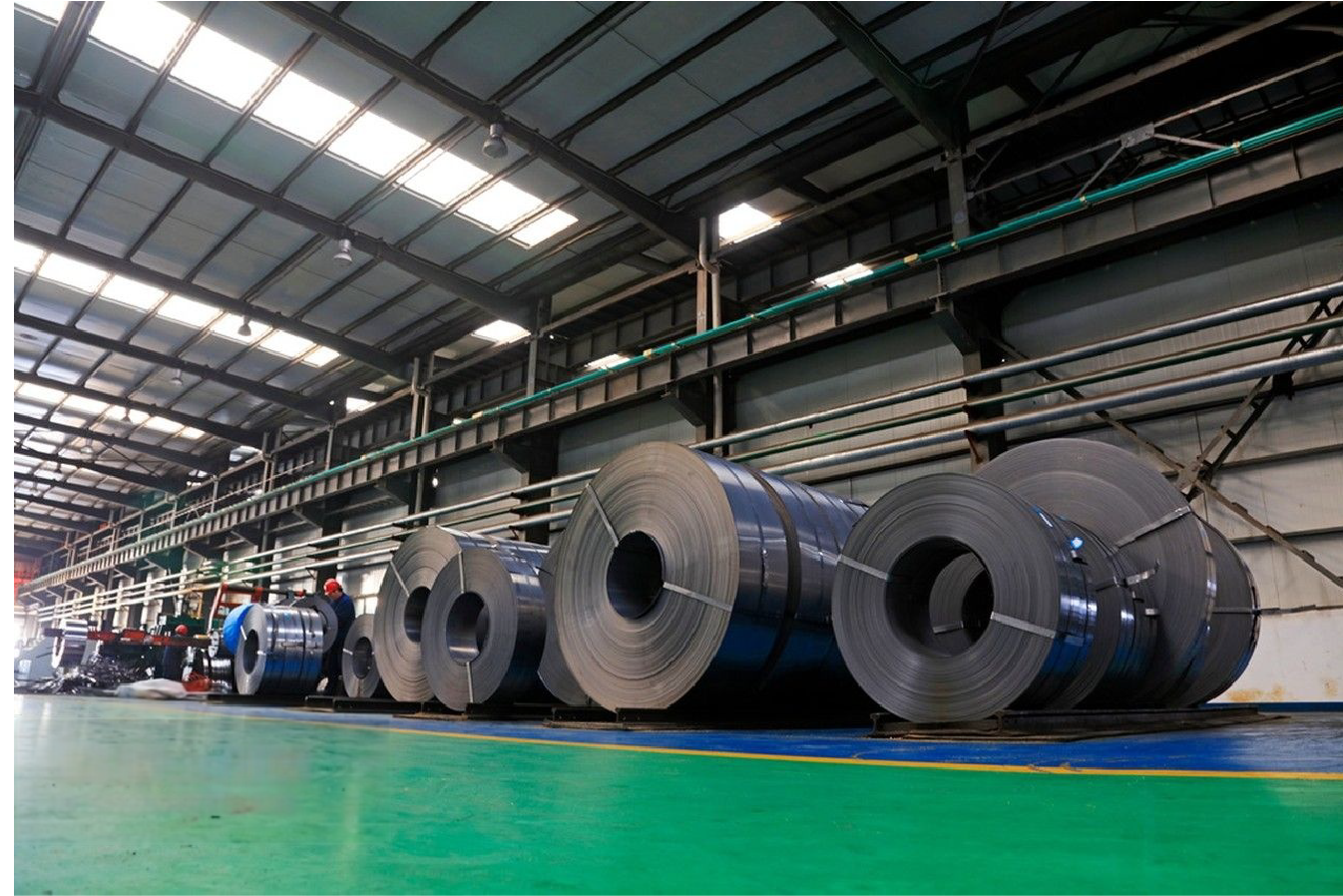
Затрудняетесь с выбором между нержавеющей сталью 201 и 304 для вашего проекта? Разница в стоимости заманчива, но страх пожертвовать качеством может быть парализующим. Неправильный выбор может привести к преждевременной коррозии и дорогостоящей замене, что подтолкнет вас к выбору дорогостоящей 304, даже если это будет излишним.
Нержавеющая сталь 201 - это недорогой аустенитный сплав, в котором часть никеля заменена марганцем и азотом, что обеспечивает хорошую формуемость, но меньшую коррозионную стойкость по сравнению с 304. Напротив, нержавеющая сталь 304 содержит большее количество никеля, обеспечивая превосходную защиту от ржавчины и коррозии, что делает ее идеальной для использования в более суровых условиях.
Принятие взвешенного решения о выборе материала - один из самых важных шагов в управлении успешной цепочкой поставок. Оно влияет на все - от вашего первоначального бюджета до долговечности конечного продукта и репутации вашего бренда. Как человек, много лет проработавший на мировом рынке стали, я убедился, что тонкое понимание этих материалов может дать нашим клиентам значительные конкурентные преимущества. Речь идет не просто о покупке стали, а об инвестировании в правильное решение конкретной проблемы.
Спор между 201 и 304 - это не просто вопрос хорошего и плохого; это стратегический расчет стоимости и производительности. Колебания цен на никель, ключевой компонент 304, могут значительно повлиять на бюджеты проектов, поэтому стабильность цен на 201-й металл является привлекательным фактором. В компании MFY мы используем комплексный подход, начиная с торговли сырьем и заканчивая конечной обработкой, что дает нам уникальную перспективу. Мы не просто продаем продукт; мы сотрудничаем с нашими клиентами, анализируя их конкретные потребности - будь то строительный проект на Ближнем Востоке или производственная линия в Юго-Восточной Азии, - чтобы обеспечить оптимальный баланс стоимости, долговечности и производительности. Это глубокое погружение призвано поделиться с вами этим опытом.
Каковы основные различия между нержавеющей сталью 201 и 304?
Вы пытаетесь расшифровать технические характеристики 201 и 304, не зная, что на самом деле означают химические различия для вашего применения? Выбор на основе неполной информации может стать дорогостоящей авантюрой, которая приведет к превышению бюджета или, что еще хуже, к преждевременному выходу продукта из строя. Давайте проясним основные различия.
Основное различие заключается в их химическом составе. Марка 304 содержит минимум 8% никеля, что обеспечивает превосходную коррозионную стойкость. В стали марки 201 часть дорогостоящего никеля заменена более доступными марганцем и азотом, что делает ее менее устойчивой к ржавчине, особенно в кислой или соленой среде.
Понимание фундаментальных различий между этими двумя сплавами - первый шаг к разумной закупке. Цифры в спецификации - содержание хрома, никеля, марганца - напрямую переходят в реальные характеристики. По моему опыту, успех клиента часто зависит именно от этого решения. Я вспоминаю консультацию с инженерным подрядчиком, который собирался заказать 304 для всего проекта внутренней отделки. Проведя их через условия окружающей среды и требования к эксплуатационным характеристикам, мы определили, что 201 удовлетворит все их потребности при экономии затрат на материал почти в 25%. Именно здесь технические знания становятся мощным коммерческим инструментом. Эти различия не просто академические; они имеют глубокие последствия для ваших производственных процессов, срока службы вашего продукта и, в конечном счете, для вашей прибыли. Мы изучим научные основы этих материалов, выйдя за рамки абстрактных процентных соотношений и сосредоточившись на том, что действительно важно: как они будут работать в вашей конкретной области применения, как они будут изготавливаться в вашей мастерской и как они будут выглядеть и служить для вашего конечного потребителя. Эти знания позволят вам строить с уверенностью и эффективностью.
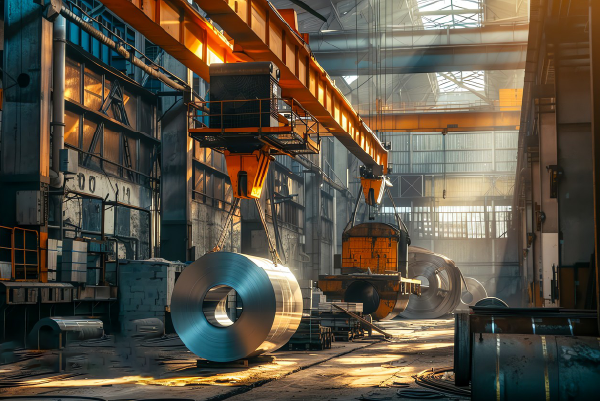
Химический состав: История никеля и марганца
Определяющее различие между 201 и 304 нержавеющая сталь1 рождается из их элементного состава. Тип 304, рабочая лошадка промышленности, относится к серии T300 и имеет в своем составе примерно 18% хрома и 8% никеля. Такое высокое содержание никеля является основным источником его знаменитой коррозионной стойкости и превосходной пластичности, что делает его легко поддающимся формовке и сварке. Он создает стабильную аустенитную кристаллическую структуру, которая обладает высокой устойчивостью к коррозионному воздействию в широком диапазоне сред. В компании MFY протоколы контроля качества включают в себя тщательный спектральный анализ, чтобы убедиться, что содержание никеля и хрома в наших рулонах и листах 304 соответствует точным международным стандартам, поскольку это является основой их характеристик.
Напротив, нержавеющая сталь 201 относится к серии T200, разработанной в период дефицита никеля в качестве экономически выгодной альтернативы. В ней содержание никеля снижено примерно до 4,5% и компенсируется увеличением содержания марганца (примерно 5,5-7,5%) и азота. Марганец и азот также выступают в роли стабилизаторов аустенита, как и никель, и способствуют повышению механической прочности 201-й стали. Однако такая замена обходится недешево для его коррозионной стойкости. Несмотря на прочность и пластичность, более низкое содержание никеля и хрома делает 201 более восприимчивой к ржавчине и точечной коррозии, особенно в средах с высокой влажностью, солью или кислотностью.
Этот компромисс занимает центральное место в процессе выбора. В то время как 304 предлагает надежное, универсальное решение, 201 представляет собой стратегический вариант, когда ценится высокая прочность, а среда применения контролируется и является благоприятной. Решение заключается не просто в выборе более дешевого материала, а в понимании специфических ролей, которые играют эти элементы, и в соответствии химического состава сплава с экологическими реалиями проекта. Наша роль в MFY часто заключается в просвещении клиентов по этому вопросу, чтобы они не переборщили и не переплатили за никель, который им не нужен.
Коррозионная стойкость: Сказка о двух средах
Наиболее важным отличием, обусловленным химическим составом, является коррозионная стойкость. Именно этот фактор должен быть основным при выборе материала. Марка 304 известна своей превосходной устойчивостью к широкому спектру атмосферных и химических сред. Высокое содержание никеля и хрома создает на поверхности пассивный, самовосстанавливающийся оксидный слой, который защищает сталь от ржавчины и коррозии. Это делает ее стандартным выбором для наружных, санитарных и промышленных применений, где воздействие влаги, химикатов или соли является неизбежным.
С другой стороны, стойкость нержавеющей стали 201 значительно ниже. Она прекрасно работает в сухих помещениях и незагрязненной атмосфере. Однако при воздействии влаги, хлоридов (например, соли) или кислотных загрязнителей на ней со временем может появиться "чайное пятно" или даже точечная коррозия. Классический случай из нашего опыта связан с клиентом из Вьетнама, производящим компоненты для прибрежных курортов. Изначально они рассматривали вариант использования 201 для наружных перил, чтобы сэкономить расходы. Мы настоятельно рекомендовали отказаться от этого варианта, предоставив данные об испытаниях в соляном тумане и продемонстрировав примеры разрушения 201 в аналогичных морских условиях. В итоге они выбрали 304, избежав дорогостоящей и подрывающей репутацию неудачи.
Для количественной оценки этого показателя инженеры иногда используют эквивалентное число сопротивления питтингу (PREN), где PREN = %Cr + 3,3 %Mo + 16 %N. Хотя это упрощенная метрика, она иллюстрирует разрыв: Тип 304 обычно имеет PREN около 18-20, в то время как Тип 201 значительно ниже, около 10-12. Эта таблица служит наглядным ориентиром:
| Окружающая среда | Нержавеющая сталь 201 | Нержавеющая сталь 304 | Оправдание |
|---|---|---|---|
| Внутри помещений, сухая (например, декоративная отделка) | Превосходно | Превосходно | 201 является более экономичным, так как не требуется повышенная коррозионная стойкость. |
| Городские улицы (умеренное загрязнение) | От хорошего до плохого | Превосходно | 304 требуется для долговременной устойчивости к кислотным дождям и загрязняющим веществам. |
| Морская/прибрежная среда | Не рекомендуется | Хорошо (316 лучше) | 304 - это минимальный стандарт, позволяющий противостоять коррозии, вызванной хлоридами и солевым туманом. |
| Продукты питания и напитки (контакт с кислотами) | Не рекомендуется | Превосходно | 304 противостоит коррозии под воздействием пищевых кислот и агрессивных чистящих средств, обеспечивая гигиеничность. |
Механические свойства и формуемость
Помимо коррозии, механические свойства этих двух сталей отличаются друг от друга, что напрямую влияет на производство. Благодаря более высокому содержанию азота нержавеющая сталь 201 в отожженном состоянии обычно прочнее и тверже, чем 304. Типичная прочность на разрыв 201-й стали может быть примерно на 10-15% выше, чем у 304-й. Эта повышенная прочность может быть преимуществом, потенциально позволяющим использовать более тонкий материал в некоторых конструкциях без снижения несущей способности, что известно как "понижение прочности".
Однако за более высокую прочность приходится платить пластичностью и формуемостью. 201 имеет более высокую скорость упрочнения, чем 304. Это означает, что при сгибании, штамповке или вытяжке материал быстрее становится твердым и хрупким. Несмотря на то что 201 можно легко формовать в сложные формы, он может потребовать более мощного оборудования, более прочной оснастки и может быть более подвержен растрескиванию при агрессивных операциях глубокой вытяжки по сравнению с более простым 304.
Я помню, как работал с клиентом, который переходил с 304 на 201 для производства кухонных моек с глубокой вытяжкой. Поначалу они столкнулись с повышенной частотой образования трещин на углах. Наша техническая команда в центре обработки MFY сотрудничала с ними, предлагая внести коррективы в скорость прессования и процесс смазки, чтобы учесть более высокую скорость упрочнения наших рулонов 201. Такая практическая поддержка позволила им успешно осуществить переход и получить экономическую выгоду без ущерба для целостности продукции. Этот практический опыт подчеркивает, что, хотя с 304 часто легче работать, 201 - это очень удобный материал, когда его специфические свойства понятны и учитываются в процессе производства.
304 обладает лучшей коррозионной стойкостьюПравда
Более высокое содержание никеля в 304 создает более устойчивый пассивный слой, который противостоит ржавчине в суровых условиях.
201 прочнее, чем 304Ложь
В то время как 201 обладает более высокой прочностью на разрыв, 304 сохраняет лучшие общие механические свойства, включая пластичность и вязкость.
Как различаются по стоимости нержавеющая сталь 201 и 304?
Значительный разрыв в цене между 201 и 304 нержавеющая сталь2 заставляет вас задуматься, действительно ли оправдана цена 304? Бюджетные ограничения - это всеобщая проблема, и указывать 304, когда достаточно 201, означает необоснованно связывать капитал, что делает ваши предложения менее конкурентоспособными.
Стоимость нержавеющей стали 304 значительно выше, чем 201, что почти полностью обусловлено высоким содержанием никеля. Никель является волатильным и дорогим биржевым товаром. Заменив значительную часть никеля более доступным марганцем, 201-я сталь обычно имеет преимущество в стоимости на 20-30%.
Эта разница в ценах не статична, это динамичная цифра, которая колеблется в зависимости от конъюнктуры мирового товарного рынка. Для любого бизнеса, но особенно для наших клиентов на быстрорастущих рынках, таких как Индия и Юго-Восточная Азия, такая экономия - не просто статья расходов, а стратегическое преимущество. Она может стать решающим фактором для победы в крупном тендере на строительство или для запуска потребительского продукта по конкурентоспособной цене. Однако цена за тонну - это только начало истории. Продуманный бизнесмен должен учитывать "общую стоимость владения", которая включает в себя расходы на переработку, техническое обслуживание и потенциальную стоимость отказа. Первоначальная экономия при выборе 201-й машины становится настоящей экономической выгодой только в том случае, если она находит подходящее применение. В следующих разделах мы рассмотрим факторы, определяющие разница в стоимости между 201 и 3043Мы проанализируем, какую роль играет волатильность рынка, и представим схему оценки общей стоимости, чтобы ваше решение о закупках было не только дешевле, но и разумнее.
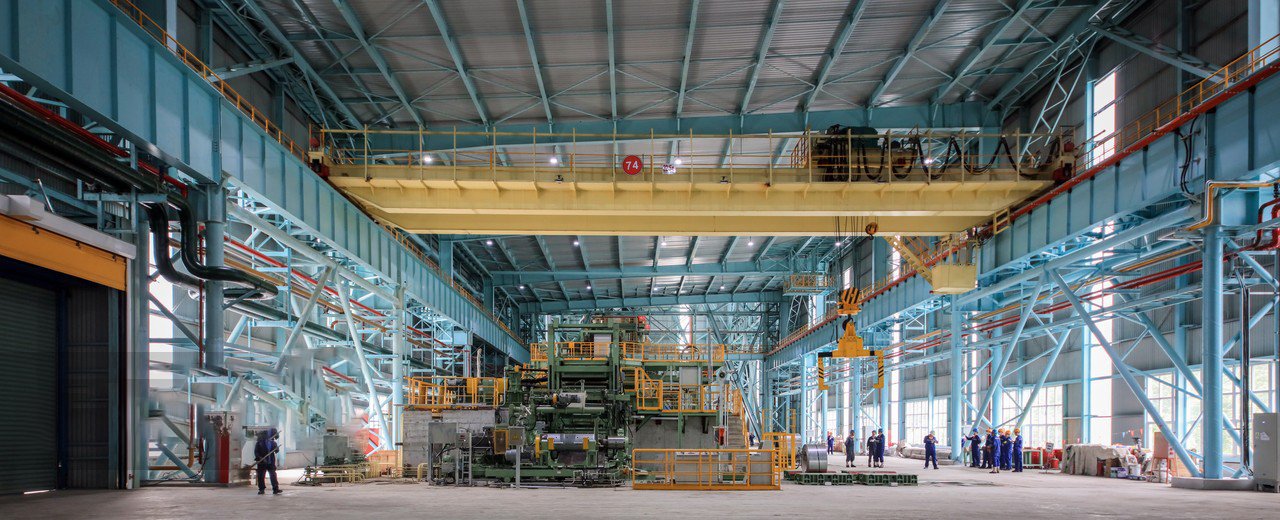
Роль ценообразования на никель на волатильность рынка
Основной причиной разницы в стоимости нержавеющей стали 201 и 304 является цена никеля, ключевого легирующего элемента. Марка 304 содержит минимум 8% никеля, в то время как 201 содержит только около 4-5%. Никель - базовый металл, торгуемый на товарных биржах, таких как Лондонская биржа металлов (LME), и его цена печально известна своей волатильностью, зависящей от динамики мирового спроса и предложения, геополитических событий и спекуляций инвесторов. Внезапный скачок цен на никель, как это неоднократно происходило в последнее десятилетие, может привести к резкому увеличению стоимости нержавеющей стали марки 304, причем зачастую без какого-либо предупреждения. Это создает значительную неопределенность для производителей и подрядчиков, которым необходимы стабильные и предсказуемые цены на материалы для долгосрочного планирования проектов и составления котировок.
Именно здесь нержавеющая сталь 201 обладает мощным экономическим преимуществом: стабильностью цен. Благодаря замене дорогого и нестабильного никеля марганцем - гораздо более распространенным и стабильным по цене элементом - стоимость 201-й стали в значительной степени изолирована от колебаний рынка никеля на LME. Такая предсказуемость бесценна. Я тесно сотрудничаю с дистрибьюторами в России и на Ближнем Востоке, которым необходимо обеспечивать своих клиентов контрактами с фиксированной ценой. Побуждая их хранить и продвигать 201-й металл для применения внутри помещений, мы помогаем им построить более устойчивую бизнес-модель. Они могут предложить своим клиентам надежную цену на такие продукты, как декоративные листы и мебельные трубки, что дает им явное конкурентное преимущество в условиях высоких цен на никель.
Зависимость от марганца делает 201 более предсказуемым и бюджетным вариантом. Для менеджеров по закупкам и владельцев предприятий такая стабильность упрощает финансовое планирование и снижает риски в цепочке поставок. Она позволяет более уверенно проводить долгосрочные торги и защищает маржу прибыли от непредвиденных колебаний на сырьевом рынке.
Расчет стоимости земли: не ограничиваясь ценой за тонну
Хотя разница в цене сырья существенна, комплексное сравнение затрат должно включать все расходы, понесенные при доставке материала с завода на завод. Это "стоимость на месте", которая включает в себя базовую цену, плату за обработку, фрахт и страхование, импортные пошлины и местные налоги. В компании MFY полностью интегрированная цепочка поставок является ключевым преимуществом, которое мы используем, чтобы помочь клиентам эффективно управлять этими расходами. Контролируя все процессы - от торговли сырьем и холодного проката до экспортной логистики, - мы можем минимизировать неэффективные затраты и передавать их дальше.
Например, когда клиент в Индии покупает листы из нержавеющей стали, он не просто покупает сталь. Они платят за то, чтобы ее обработали до нужной толщины и отделки, упаковали для транспортировки по морю, отправили в порт, например в Нхава-Шеву, и прошли таможенный контроль. Поскольку у нас есть собственное оборудование для холодной прокатки, наши затраты на обработку ниже, чем у простого трейдера, которому приходится передавать этот этап на аутсорсинг. Наша опытная команда логистов, знакомая с правилами импорта на наших ключевых рынках, гарантирует, что грузы будут правильно оформлены, чтобы избежать дорогостоящих задержек и платы за простой в порту.
Рассмотрим упрощенный сравнительный анализ для стандартного заказа на 10 тонн листового проката 2B с доставкой в крупный порт Юго-Восточной Азии:
| Компонент затрат | Нержавеющая сталь 201 (USD) | Нержавеющая сталь 304 (USD) | Примечания |
|---|---|---|---|
| Цена материала (за тонну) | $1,800 | $2,400 | Примерная цена отражает типичную разницу в ~25%. |
| Общая стоимость материала | $18,000 | $24,000 | Первоначальная стоимость до логистики. |
| Обработка и упаковка | $800 | $800 | Предполагается, что они одинаковы для обоих классов. |
| Морские перевозки и страхование | $1,200 | $1,200 | Основывается на объеме/весе, а не на стоимости. |
| Импортная пошлина (например, 7,5%) | $1,350 | $1,800 | Рассчитывается по материальной стоимости, усиливая разницу. |
| Общая стоимость высадки | $21,350 | $27,800 | Итоговая разница в стоимости еще больше. |
| Экономия затрат на посадку с 201 | - | $6,450 (23%) | Значительный капитал, высвобожденный для других нужд бизнеса. |
Эта таблица наглядно демонстрирует, как экономия на первоначальных затратах увеличивается за счет адвалорных тарифов. Экономия в 23% на наземных расходах - мощный стимул, который может напрямую повысить рентабельность проекта.
Общая стоимость владения (TCO) в сравнении с первоначальными инвестициями
Наиболее сложным способом оценки экономической эффективности 201 по сравнению с 304 является анализ общей стоимости владения (TCO). Этот показатель выходит за рамки первоначальной стоимости покупки и включает в себя весь жизненный цикл изделия: установку, обслуживание, ремонт и последующую замену. Выбор материала с более низкой TCO, а не только более низкой начальной ценой, является отличительной чертой действительно стратегического решения о закупках. Главное - понять, что TCO полностью зависит от области применения.
При правильном применении нержавеющая сталь 201 обеспечивает значительно более низкую совокупную стоимость владения. Рассмотрим внутренние архитектурные элементы, такие как стеновые панели, облицовка эскалаторов или декоративные светильники для розничной торговли. В этих контролируемых, сухих условиях 201-я сталь не подвергается коррозии. Срок его службы будет идентичен сроку службы 304, и он не потребует дополнительного обслуживания. В этом сценарии первоначальная экономия в 20-30% напрямую приводит к снижению совокупной стоимости владения на 20-30%. Первоначальные инвестиции ниже, а долгосрочные затраты одинаковы (равны нулю), что делает 201-ю модель экономически более выгодным выбором.
Однако выбор 201 для неправильного применения приводит к "ложной экономии", когда совокупная стоимость владения резко возрастает. Представьте себе использование 201 для труб на химическом заводе или для перил на прибрежной набережной. Первоначальная экономия будет быстро сведена на нет огромными затратами на преждевременный выход из строя: простоем системы, трудозатратами на замену, потенциальными инцидентами, связанными с безопасностью, и ущербом для репутации вашей компании. В данном случае более высокие первоначальные инвестиции в 304 - это страховка, которая приводит к значительному снижению совокупной стоимости владения в течение всего срока службы продукта. Как поставщик решений, наша цель в MFY заключается в том, чтобы провести клиентов через этот анализ совокупной стоимости владения, гарантируя, что когда они сделают выбор в пользу экономии на 201, это будет устойчивое и разумное экономическое решение.
304 дороже из-за никеляПравда
Нержавеющая сталь марки 304 содержит не менее 8% никеля, дорогостоящего и нестабильного товара, что делает ее значительно дороже марки 201.
201 обладает лучшей коррозионной стойкостьюЛожь
201 обладает меньшей коррозионной стойкостью, чем 304, особенно в суровых условиях, из-за пониженного содержания никеля и более высокого содержания марганца.
Каковы эксплуатационные характеристики нержавеющей стали 201?
Вы не решаетесь использовать нержавеющую сталь 201, потому что знакомы с ее репутацией "более дешевого" материала и не уверены в ее реальных достоинствах? Такая неуверенность мешает вам использовать весь потенциал 201-й стали для стратегической оптимизации затрат в соответствующих проектах.
Нержавеющая сталь 201 обладает более высокой механической прочностью (на растяжение и выход), чем нержавеющая сталь 304, благодаря содержанию азота. Она обладает хорошей формуемостью и свариваемостью, что делает ее пригодной для многих производственных процессов. Основное ограничение - умеренная коррозионная стойкость, что ограничивает ее использование только внутри помещений или в мягких, несоленых средах.
Не ограничиваясь простыми рассуждениями о стоимости, важно оценить 201 как материал, обладающий уникальным набором положительных качеств. В своих поездках и консультациях с клиентами по всей Азии и Ближнему Востоку я видел, как 201-й материал используется с невероятной изобретательностью. Это не просто заменитель; в некоторых случаях его более высокая прочность делает его лучшим выбором. Слишком часто инженеры и дизайнеры, не знакомые с ним, останавливаются на "безопасном" варианте 304, даже если это является излишним проектированием. В этом разделе мы подробно и с практической точки зрения рассмотрим характеристики 201. Мы рассмотрим, как его прочность может стать преимуществом при проектировании, как управлять его свойствами при изготовлении, а также его эстетические качества, что позволит вам рассматривать 201 не как компромисс, а как специализированный материал для разумного, экономически эффективного проектирования.
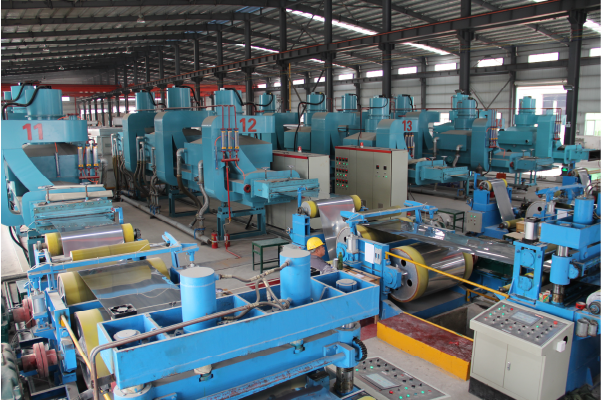
Прочность и твердость: Несказанное преимущество
Одной из наиболее недооцененных характеристик нержавеющей стали 201 является ее превосходная механическая прочность по сравнению с 304. Благодаря преднамеренному добавлению азота, эффективного упрочняющего агента, 201-я сталь постоянно демонстрирует более высокие показатели прочности на разрыв и текучести. В типичном отожженном состоянии предел текучести 201 может быть на 40% выше, чем у 304. Это не просто техническая характеристика; она имеет важное практическое значение для дизайна и проектирования изделий. Эта неотъемлемая прочность означает, что для некоторых конструкционных применений можно достичь той же несущей способности при использовании более тонкого материала 201, чем 304.
Такая практика, известная как "понижающий контроль", дает двойную экономическую выгоду: 201 килограмм не только дешевле, но вы также используете меньше килограммов на единицу продукции. Это преимущество особенно актуально в крупносерийном производстве, где каждый сэкономленный грамм материала многократно увеличивает существенное сокращение затрат. Я работал с крупным производителем оборудования для предприятий общественного питания, такого как стеллажи и стойки для оборудования. Они перешли с листов 304 толщиной 1,2 мм на 1,0 мм толщиной 201 листов нержавеющей стали4 от MFY для изготовления структурных рам. Более высокая прочность материала 201 обеспечила соответствие продукции всем требованиям безопасности и нагрузки, но при этом стоимость материала на единицу продукции снизилась почти на 35%, что является значительным конкурентным преимуществом.
Также важно отметить, что 201 затвердевает быстрее, чем 304. В процессе формовки получается готовая деталь, которая еще более твердая и устойчивая к вмятинам и ударам, чем аналогичная деталь, изготовленная из 304. Для таких сфер применения, как кухонные накладки для ресторанов или защитные уголки для стен, такая повышенная твердость поверхности является явным преимуществом, обеспечивая повышенную долговечность в условиях высокой проходимости.
Формуемость и свариваемость на практике
Несмотря на то, что 201 менее пластичен, чем 304, он все же является очень пластичным материалом, который можно использовать в широком спектре производственных процессов. Его можно легко гнуть, штамповать, прокатывать и вытягивать. Ключ к успеху лежит в понимании и приспособлении к более высокой скорости упрочнения. В таких процессах, как глубокая вытяжка, где материал сильно растягивается, это означает, что 201 может потребовать больше промежуточных этапов отжига, чем 304, если вытяжка особенно сильная. Изготовителям также может потребоваться использование более прочной оснастки и обеспечение надлежащей смазки для предотвращения задиров и растрескивания. Однако для подавляющего большинства применений, таких как гибка профилей для оконных рам или штамповка неглубоких сковородок, вполне подходят стандартные технологии изготовления.
Когда дело доходит до соединения, нержавеющая сталь 201 поддается сварке всеми обычными методами плавления и контактной сварки, используемыми для 304. Из нашего опыта поставки труб из нержавеющей стали для таких применений, как мебель и поручни, мы знаем, что достижение прочного и чистого сварного шва имеет первостепенное значение. Из-за иного химического баланса сварка 201 требует некоторых особых соображений. Для предотвращения межкристаллитной коррозии в зоне термического влияния (HAZ) сварного шва часто рекомендуется использовать присадочный пруток из более высокого класса сплава (например, 308L) и применять методы, минимизирующие тепловое воздействие, например, более высокую скорость перемещения.
Наша техническая поддержка в MFY часто включает в себя предоставление практических советов такого рода. Клиенту, производящему компоненты выхлопных систем для вторичного рынка, мы предоставили конкретные рекомендации по сварке TIG наших труб 201, чтобы швы оставались прочными и устойчивыми к коррозии. Понимая поведение 201-й трубы, производители могут постоянно изготавливать из нее высококачественные изделия, развеивая миф о том, что это изначально "трудный" материал для работы.
Эстетические и отделочные качества
Визуально, при первой установке, нержавеющая сталь 201 и 304 практически неотличимы. Обе марки могут поставляться и обрабатываться с одним и тем же диапазоном отделки поверхности, от матовой отделки 2B до отражающей Bright Annealed (BA) или матовой отделки № 4, которая популярна для приборов и архитектурной отделки. Это означает, что для любого внутреннего применения 201-й может обеспечить такую же современную, чистую и высококлассную эстетику, как 304-й, без сопутствующих затрат. В этом его главная сила на рынках архитектуры и потребительских товаров.
Критическое различие в эстетике проявляется со временем и только в определенных условиях. В сухом, стабильном помещении декоративная панель 201 сохранит свой блеск в течение десятилетий и будет работать так же, как и панель 304. Однако если эту же панель перенести на улицу, особенно во влажный или прибрежный климат, на ней начнут появляться признаки "чайного окрашивания" - легкое обесцвечивание поверхности или даже точечные пятна ржавчины в течение нескольких месяцев или лет. А вот 304-я панель в тех же условиях будет сохранять первозданный вид гораздо дольше.
Поэтому выбор отделки так же важен, как и выбор сорта. Для дизайнеров и архитекторов это означает, что они могут с уверенностью выбрать 201 для огромного количества интерьерных проектов. Ниже приведено руководство, которое поможет в процессе принятия решения:
| Приложение | Рекомендуемый класс | Общая отделка | Обоснование |
|---|---|---|---|
| Интерьер кабины лифта | 201 | No. 4 / Hairline | Обеспечивает первоклассный внешний вид по низкой цене в контролируемой среде. |
| Корпус кухонной техники | 201 | BA или № 4 | Эстетически идентичен 304, экономически эффективен при массовом производстве. |
| Поручни и балюстрады для помещений | 201 | Зеркало / Полировка | Обеспечивает безопасность и эстетичность, не требуя коррозионной стойкости 304. |
| Наружный фасад здания | 304 | No. 4 / Etched | Для противостояния погодным условиям и загрязнению окружающей среды требуется превосходная коррозионная стойкость 304. |
Понимая эти нюансы, вы сможете использовать эстетические качества 201 в полной мере, добиваясь первоклассных результатов в дизайне при более экономичном и разумном использовании ресурсов.
201 имеет более высокую прочность, чем 304Правда
Содержание азота в нержавеющей стали 201 обеспечивает ей более высокий предел текучести 40%, чем 304 в отожженном состоянии.
201 не подходит для всех видов сваркиЛожь
201 можно сваривать стандартными методами, если использовать правильные технологии (например, присадочный материал 308L).
В каких случаях имеет смысл использовать нержавеющую сталь марки 304, несмотря на более высокую стоимость?
Беспокоитесь о том, чтобы не срезать углы и не столкнуться с последствиями отказа продукции? Вы понимаете, что 304 - это выбор премиум-класса, но вам нужно уверенно обосновать более высокую стоимость вашей команде менеджеров или конечному клиенту в мире, где каждый доллар подвергается тщательному анализу.
Нержавеющая сталь 304 обязательно должна использоваться в приложениях с агрессивной средой, например, в прибрежных зонах или в зонах, подверженных воздействию промышленных химикатов. Она также незаменима там, где гигиена имеет решающее значение, например, в пищевой промышленности и медицинском оборудовании, поскольку ее превосходная устойчивость к ржавчине обеспечивает безопасность, долговечность и соответствие требованиям.
Выбор 304 в таких ситуациях - это не расходы, а инвестиции в снижение рисков и долгосрочную ценность. Наша репутация как поставщика строится не только на предоставлении материала, но и на предоставлении справа материал. Я на собственном опыте убедился в катастрофических последствиях неправильного использования низкосортной стали в критически важных областях применения - затраты на замену, простои и ущерб бренду всегда превышают первоначальную экономию. Некоторые усваивают этот урок с трудом, но мы помогаем нашим клиентам избежать этого. Этот раздел посвящен определению четких, не подлежащих обсуждению красных линий. Мы укажем конкретные области применения и условия, в которых свойства 304 не просто полезны, а абсолютно обязательны для обеспечения безопасности, долговечности и душевного спокойствия. Речь идет о принятии ответственного, обоснованного и, в конечном счете, более выгодного решения в долгосрочной перспективе.
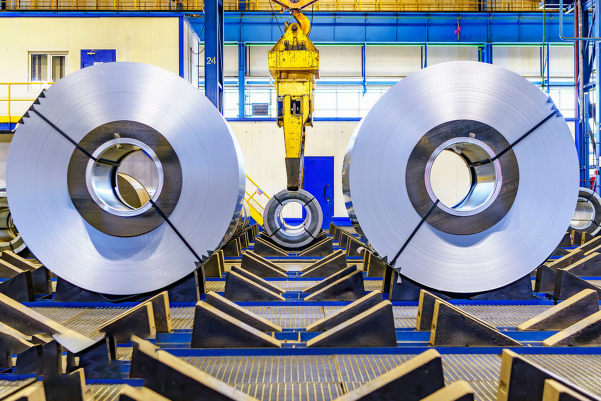
Среды с высоким риском коррозии
Самой важной причиной для выбора нержавеющей стали 304 является применение в средах с высоким риском коррозии. В таких условиях использование 201 - это не просчитанный риск, а гарантия преждевременного выхода из строя. Наиболее распространенными из этих агрессивных сред являются морские и прибрежные районы5. Воздух в этих местах насыщен хлоридами от соляного тумана, которые чрезвычайно агрессивно воздействуют на нержавеющую сталь. Низкое содержание хрома и никеля в 201-й стали делает ее уязвимой к точечной и щелевой коррозии, которая может в считанные месяцы нарушить как эстетику, так и структурную целостность детали.
Промышленные зоны и районы с сильным загрязнением также представляют значительную коррозионную угрозу. Выбросы от заводов и автомобилей могут привести к кислотным дождям, содержащим серную и азотную кислоты. Эти химические вещества легко воздействуют на нержавеющую сталь 201 и разрушают ее. 304, обладающая прочным пассивным оксидным слоем, обеспечивает надежную и долговременную стойкость в этих сложных атмосферных условиях. В качестве примера можно привести случай, произошедший с крупным строительным подрядчиком на Ближнем Востоке, работающим над созданием нового портового комплекса. Они обратились к нам за ценой на структурные опоры и трубопроводы. Несмотря на значительную разницу в первоначальной стоимости, мы предложили и рекомендовали исключительно 304 и, для наиболее ответственных деталей, 316L. Предложить 201 было бы безответственно, так как это привело бы к катастрофическому отказу, поставив под угрозу эксплуатационную целостность и безопасность проекта.
Речь идет не о перепродаже, а о защите инвестиций наших клиентов. Любое применение, где компонент подвергается воздействию соли, антиобледенительных реагентов, промышленных дымов или прямому химическому контакту, требует превосходной коррозионной стойкости, которую может обеспечить только сталь 304 или более высоких марок.
Применение в пищевой промышленности и в санитарных условиях
В отраслях, где гигиена имеет первостепенное значение, таких как производство продуктов питания и напитков, фармацевтика и производство медицинского оборудования, нержавеющая сталь марки 304 является промышленным стандартом, и на то есть веские причины. Термин "пищевой класс" является синонимом материалов, которые безопасны для прямого контакта с потребляемыми продуктами. 304 нержавеющая сталь6 заслужил это звание, поскольку обладает высокой коррозионной стойкостью, не выщелачивается и долговечен. Он не вступает в реакцию с кислотами, содержащимися во фруктах, мясе и молоке, и не разрушается под воздействием жестких химических средств очистки и стерилизации, используемых для поддержания санитарных условий.
Поверхность правильно обработанной нержавеющей стали 304 гладкая и непористая, что не позволяет бактериям укрываться в микроскопических трещинах и щелях, облегчая чистку и эффективную дезинфекцию. Именно поэтому этот материал выбирают для изготовления всего - от чанов для молока и резервуаров для брожения пива до хирургических инструментов и рабочих поверхностей в больницах. Марка 201, обладающая меньшей коррозионной стойкостью и другим составом элементов, обычно не считается пищевой. Он может быть более подвержен коррозии под воздействием пищевых кислот и чистящих растворов, что может нарушить гигиену поверхности и привести к загрязнению продукта.
Мы работаем со многими интеграторами оборудования, которые создают технологические линии для пищевой промышленности по всей Юго-Восточной Азии. Для них не существует никаких споров. Все листы, трубы и фитинги, которые соприкасаются с продуктом, имеют маркировку 304 или 316L. Риск отзыва продукции, штрафов от регулирующих органов и ущерба для репутации пищевого бренда намного превышает возможную экономию на материалах. Выбор 304 в таких случаях является неотъемлемым аспектом обеспечения здоровья и безопасности населения.
Долгосрочное наружное архитектурное и строительное использование
Для архитектурных проектов, рассчитанных на то, чтобы выдержать испытание временем, нержавеющая сталь 304 является разумным и ответственным выбором для большинства наружных применений. При проектировании фасадов зданий, общественных скульптур, мостов и наружных перил архитекторы и инженеры рассчитывают на срок службы 50 лет и более. Материал должен не только сохранять структурную целостность, но и эстетичный внешний вид, выдерживая десятилетия дождей, солнца, ветра и загрязнения.
Несмотря на то, что в первый день 201-я модель может выглядеть идентично, ее восприимчивость к окрашиванию и коррозии в окружающей среде означает, что для сохранения ее внешнего вида потребуется частая чистка и обслуживание, а во многих климатических условиях она неизбежно разрушится. Это приводит к значительному увеличению стоимости жизненного цикла. Представьте себе расходы на возведение строительных лесов вокруг 20-этажного здания для очистки или замены испачканных фасадных панелей из неподходящего материала. Первоначальная экономия на материале окажется незначительной из-за астрономических расходов на долгосрочное обслуживание или замену.
Приведенная ниже таблица служит практическим руководством для архитекторов и подрядчиков при выборе подходящей марки для архитектурных элементов, обеспечивая баланс между стоимостью и критически важными требованиями к долговечности и эксплуатационным характеристикам.
| Архитектурный компонент | Окружающая среда | Рекомендуемый класс | Оправдание |
|---|---|---|---|
| Декоративные панели для интерьера | Крытый, с климат-контролем | 201 | Экономичность и отсутствие риска коррозии. |
| Наружная вывеска | Городской, не прибрежный | 304 | Противостоит атмосферным воздействиям и загрязнению, сохраняя внешний вид. |
| Конструкционные балки/опоры | На открытом воздухе, в любом климате | 304 / Дуплекс | Критически важен для безопасности; требует проверенной долговременной прочности и коррозионной стойкости. |
| Облицовка фасада | Прибрежные / морские | 316L | Требуется повышенная коррозионная стойкость (молибден) для борьбы с солевым туманом. |
| Общественные поручни | Открытый, с высокой проходимостью | 304 | Обеспечивает долговременную безопасность конструкции и эстетическую целостность при минимальном уходе. |
Инвестируя в 304 для этих постоянных, видимых применений, застройщики и владельцы зданий защищают свои активы и гарантируют, что их проекты оставят после себя долговременное, положительное наследие.
304 является обязательным для применения в прибрежных районахПравда
Воздух, насыщенный солью, быстро разрушает нержавеющую сталь 201, поэтому превосходная коррозионная стойкость 304 очень важна в морской среде.
201 является эквивалентом 304 для пищевых продуктовЛожь
201 не обладает коррозионной стойкостью и непористой поверхностью, необходимой для обеспечения безопасности пищевых продуктов, в отличие от 304, которая является промышленным стандартом для контакта с пищевыми продуктами.
В каких случаях выбор нержавеющей стали 201 дает экономические преимущества?
Вы активно ищете четкие, малорискованные возможности для снижения стоимости материалов и получения конкурентных преимуществ? Не имея четких рекомендаций, вы рискуете упустить существенную экономию, которая могла бы сделать вашу продукцию более доступной или ваши заявки на участие в проекте более успешными. Такая нерешительность дорогого стоит.
Выбор нержавеющей стали 201 обеспечивает значительные экономические преимущества в крупносерийных, чувствительных к стоимости применениях в контролируемых внутренних условиях. К ним относятся декоративная отделка интерьеров, кухонная утварь, каркасы мебели и некоторые автомобильные компоненты, где более низкая цена обеспечивает конкурентное преимущество без ущерба для необходимых характеристик.
Именно здесь закупки становятся стратегическим искусством. Речь идет о том, чтобы выйти за рамки стандартного "безопасного" выбора и принять хирургически точное решение, основанное на применении. Я испытываю огромное профессиональное удовлетворение, когда могу направить клиента на правильное использование 201. Недавно я помог клиенту из сектора потребительских товаров провести переоценку своих материалов, и, перейдя на 201 для нужных компонентов, он добился снижения затрат, что напрямую способствовало росту его доли на рынке. Этот заключительный раздел посвящен определению "сладких мест" - конкретных, проверенных областей применения, где нержавеющая сталь 2017это не просто более дешевая альтернатива, а более разумный и выгодный выбор. Это оперативная информация, которую вы можете использовать для оптимизации бюджета немедленно.
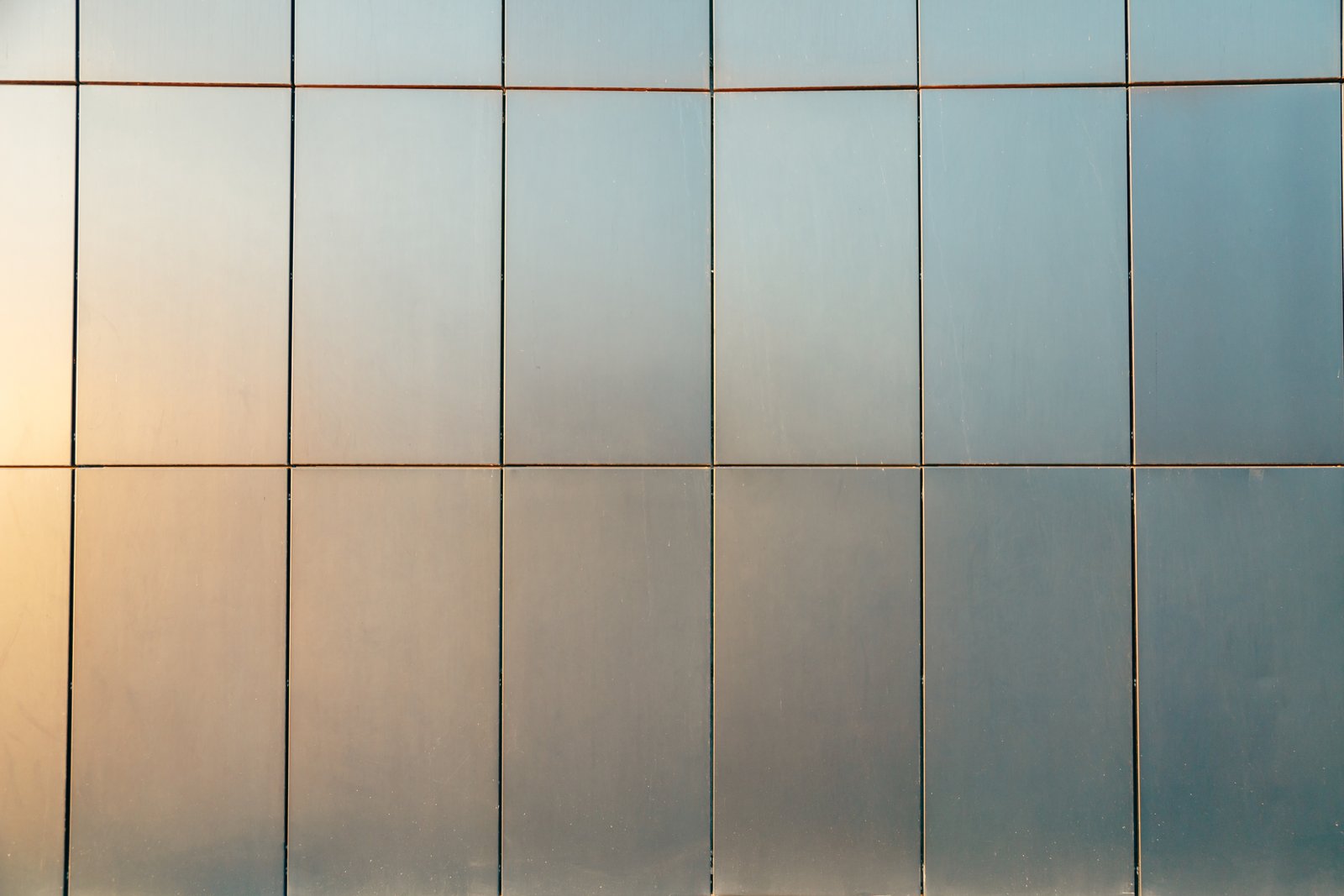
Применение в архитектуре и декоративной отделке помещений
Самая большая и безопасная область для использования экономических преимуществ нержавеющей стали 201 - это архитектурные и декоративные изделия внутри помещений. В этих контролируемых, стабильных климатических условиях основная угроза для нержавеющей стали - коррозия от влаги и загрязняющих веществ - практически отсутствует. Это означает, что превосходная коррозионная стойкость 304 нержавеющая сталь8 является излишним и, следовательно, ненужным расходом. Для таких применений ключевыми показателями являются эстетика и формуемость, и 201 превосходит их по обоим параметрам, обеспечивая значительную экономию средств.
Подумайте об огромном количестве поверхностей из нержавеющей стали в современном торговом центре, аэропорту или холле отеля: двери и кабины лифтов, стеновые панели, облицовка колонн, декоративная отделка, накладки и внутренние перила. Во всех этих случаях 201 может обеспечить желаемый элитный, чистый и современный вид за долю стоимости 304. Мы поставляем большие объемы рулонов 201 с матовым покрытием № 4 крупному производителю в Индии, специализирующемуся на внутренней отделке коммерческих помещений. Используя 201, они могут более конкурентоспособно участвовать в крупных проектах, делая эстетику премиум-класса доступной для своих клиентов. Экономия затрат на материалы постоянно составляет 20-25% по сравнению с 304, что является решающим фактором успеха их бизнеса.
Мировой рынок интерьерного архитектурного металла растет, что обусловлено спросом на долговечный и современный дизайн. Такие экономичные материалы, как 201, являются важным катализатором этого роста, позволяя архитекторам и дизайнерам шире использовать нержавеющую сталь без ущерба для бюджета проекта. Для любого внутреннего применения, где сталь не подвергается воздействию химикатов или постоянной влаги, 201 - разумный экономичный выбор.
Потребительские товары и домашняя утварь
На рынке потребительских товаров царит жесткая конкуренция, и цена является основным фактором при принятии решений о покупке. Для производителей многих товаров для дома и бытовой техники стоимость материалов составляет значительную часть общей стоимости продукта, и сокращение расходов на нержавеющую сталь 20% может стать разницей между прибылью и неудачей. Именно в этом секторе нержавеющая сталь 201 при правильном использовании обеспечивает мощное конкурентное преимущество. Она идеально подходит для широкого спектра изделий, где функциональная среда не подвержена коррозии.
Примеров множество: декоративные канистры, хлебницы, миски для смешивания, держатели для посуды, мусорные баки, а также внешние корпуса таких приборов, как микроволновые печи и тостеры. В этих случаях сталь должна быть пластичной, эстетически привлекательной и легко чиститься - всеми характеристиками, которыми обладает 201. Один из наших клиентов, занимающийся массовым производством кухонной утвари для экспортных рынков, использует листы 201 для изготовления большей части своей продукции. Хорошая пластичность материала позволяет им создавать разнообразные формы, а его способность выдерживать высокую полировку придает их продукции премиальный вид на полках магазинов, сохраняя при этом цену, привлекательную для массового рынка.
Однако важно применять эту логику избирательно. Если чаша для смешивания из 201 вполне приемлема, то кастрюля из 201, используемая для приготовления кислых томатных соусов, - нет, поскольку тепло и кислота могут вызвать коррозию. Следующая таблица служит четким руководством для разработчиков продуктов:
| Потребительские товары | Рекомендуемый класс | Оправдание |
|---|---|---|
| Чаши для смешивания, канистры | 201 | Сухое хранение или некислотный контакт; ключевым фактором является стоимость. |
| Столовые приборы (вилки, ложки) | 201 или 430 | Недорогие столовые приборы часто изготавливаются из 201-го сплава, а более дорогие - из 304-го сплава, который лучше переносит мытье в посудомоечной машине. |
| Посуда (кастрюли, сковородки) | 304 | Должны выдерживать широкий спектр пищевых кислот, высокую температуру и многократное мытье. |
| Корпуса для приборов | 201 | Внешний корпус не подвержен коррозии и имеет эстетичный вид, что идеально подходит для экономии средств. |
Стратегически правильно используя 201 для нужных компонентов, производители могут оптимизировать свою структуру затрат и поставлять потребителям доступную и высококачественную продукцию.
Автомобили и транспорт (внутренние/неэкспонируемые части)
Автомобильная промышленность находится под неустанным давлением необходимости снижения стоимости и веса. В то время как элитная внешняя отделка и выхлопные системы в суровом климате требуют применения 304 или даже более экзотических марок, существует множество областей применения внутри автомобиля, где нержавеющая сталь 201 является отличным и экономичным вариантом. Как правило, это внутренние или подкузовные компоненты, которые не подвергаются прямому воздействию дорожной соли и суровых погодных условий. Более высокая прочность 201-й стали может стать здесь значительным преимуществом, позволяя создавать более легкие компоненты, отвечающие структурным требованиям.
Рассмотрим такие области применения, как каркасы и конструкции сидений, декоративная отделка салона, кронштейны приборной панели и некоторые компоненты выхлопных систем для автомобилей, продаваемых в сухом климате, не связанном с прибрежными районами. В этих условиях сочетание прочности, пластичности и низкой стоимости 201-го сплава делает его привлекательным выбором для автомобильных инженеров и специалистов по закупкам. Каждый грамм сэкономленного веса повышает топливную экономичность, а каждый доллар, сэкономленный на компоненте, умножается на миллионы при серийном производстве.
Мы давно сотрудничаем с поставщиком автомобилей второго уровня в Юго-Восточной Азии, который производит компоненты для коммерческих автомобилей, таких как автобусы и грузовики. Они используют трубы MFY из нержавеющей стали 201 для изготовления внутренних поручней и опорных конструкций сидений для городских автобусов. Этот материал обеспечивает необходимую прочность для соблюдения стандартов безопасности и чистый, долговечный эстетический вид интерьера транспортного средства. Поскольку салон автобуса представляет собой контролируемую среду, коррозионная стойкость 304 не требуется. Этот разумный выбор материала помог нашему клиенту выиграть крупные контракты с муниципальным транспортным парком, обеспечив высокую конкурентоспособность его предложений.
201 идеально подходит для декоративного использования внутри помещенийПравда
Нержавеющая сталь 201 обеспечивает экономию средств при использовании внутри помещений, где коррозионная стойкость не имеет решающего значения.
201 подходит для любой посудыЛожь
201 не следует использовать для изготовления посуды, контактирующей с кислыми продуктами, так как он не обладает достаточной коррозионной стойкостью для таких целей.
Заключение
Выбор между нержавеющей сталью 201 и 304 - это не вопрос хорошего и плохого, а вопрос точности. Настоящая эффективность достигается за счет подбора правильного материала для правильного применения, баланса между стоимостью, производительностью и окружающей средой для принятия разумного, обоснованного решения для вашей цепочки поставок.
-
Понять, как состав элементов влияет на производительность и пригодность к использованию в различных условиях. ↩
-
Узнайте о ключевых различиях в материалах, влияющих на стоимость и пригодность к применению ↩
-
Понять, как цены на никель влияют на стоимость нержавеющей стали и колебания рынка ↩
-
Узнайте, как нержавеющая сталь 201 позволяет снизить затраты и сохранить производительность ↩
-
Понять влияние хлоридов на нержавеющую сталь в морских условиях ↩
-
Узнайте, почему 304 является стандартом в пищевой и санитарной промышленности ↩
-
Узнайте о сравнительных преимуществах производительности при использовании внутри помещений ↩
-
Понять различия в коррозионной стойкости и подходящие условия для 304 ↩
У вас есть вопросы или нужна дополнительная информация?
Свяжитесь с нами, чтобы получить индивидуальную помощь и квалифицированный совет.
